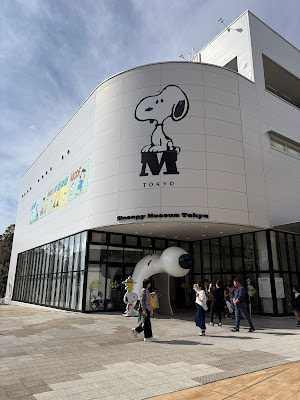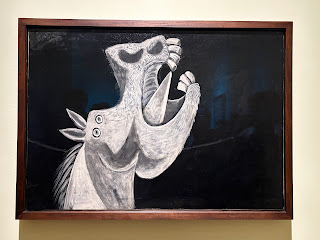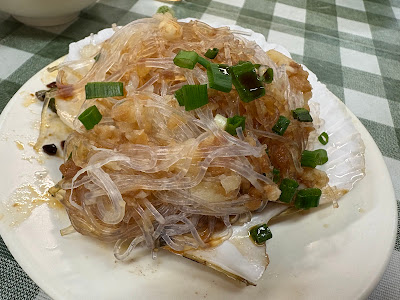 |
| A family-friendly, fun place to visit |
A friend and I have a mutual love of Snoopy. Mine goes back to when I was a child, reading the Peanuts comic strips and watching A Charlie Brown Christmas. The comics and characters reflected how kids felt at the time -- and they still hold up today! Snoopy projected our fantasies, from being able to dance to being the World War I Flying Ace shooting down the Red Baron. Oh and observations about cats and dogs were so true.
So when my friend told me about the Snoopy Museum in Tokyo I had to go visit. It is the only satellite museum affiliated with the Charles M Schultz Museum and Research Center in Santa Rosa, California.
 |
| One of the first Snoopy comic strips by Schultz |
It takes about an hour to get to Grandberry Park, southwest of Tokyo, but once you get there you can see how appealing it is for families, with lots of outlet shops -- tax free for tourists -- and activities for children to do, as well as the Snoopy Museum.
There are Snoopy statues along the way to point you in the right direction, but soon you will come across a giant Snoopy with his mouth open, indicating the entrance to the museum. We got tickets online in advance, and in exchange we received paper tickets that were each Peanuts comic strips and two stickers too.
From there we were invited to go up to the third floor and work our way down. There are some rooms where we couldn't take pictures, as they were photographs of Charles Schultz as a child or family pictures, but other than that lots of large-scale comic strips that were reproduced.
 |
| Snoopy trying to hit a golf ball with an audience |
Some of the comic strips were animated which was fun, like Charlie Brown watching TV, and Snoopy trying to get his attention and sleeping on top of his head; Charlie Brown gets annoyed and walks to the door, outside and flings Snoopy onto his red dog house to sleep.
Interestingly not much about A Charlie Brown Christmas, though a lot of jazz was played in the museum which made it relaxing to be in there.
And of course the other best part of the museum was the gift shop! All kinds of merchandise were available, but strangely no children's T-shirts, but lots of stuffed Snoopys, plastic folders, stickers, cookies, notebooks, key rings and so on.
 |
| Giant sleeping Snoopy... you can't touch though |
It was a fun trip down memory lane, but also impressive to see how Schultz's comics still stand the test of time!
Tsuruma 3-1-4, Machida-shi
Tokyo



















































